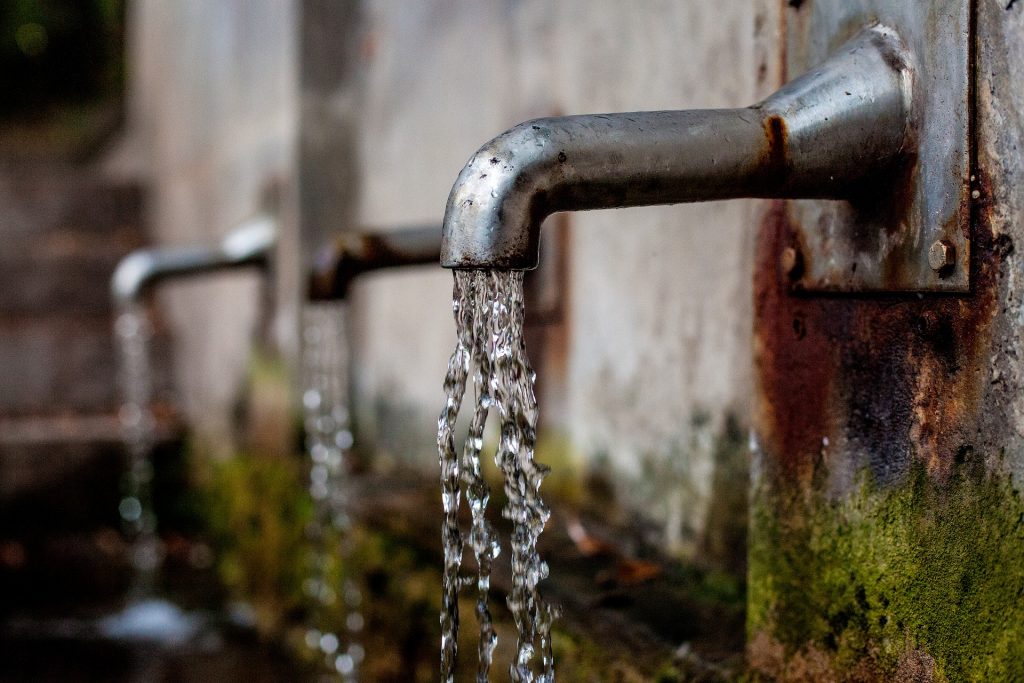
Due to climate change, water will become more unevenly distributed across the globe. Finding solutions to conflicts surrounding water scarcity is thus one of the most pressing challenges today. Since March 22nd is the International World Water Day, we present to you research by our RLC Alumni Caroline Bosire, Reta Hailu, Loan Nguyen, and Osia Odula, who approach this topic from different perspectives:
Caroline Kerubo Bosire: Overcoming resource constraints to increase meat and milk production among small scale farmers in Africa
My work has centered on mitigating resource constraints experienced by majority of small scale African farmers; this included supporting them to adopt technologies suitable for them under situations of varied resource availability in which they practice farming. The research work outlines the historical trends associated with livestock production in Kenya and links this to the use of water and land over a 30 years period. In this paper, we also define feed composition and dietary requirements associated with meat and milk production across three distinct livestock production systems. Essentially providing a baseline to use in more in-depth analysis of water and land use in livestock production. I have also explored the options to sustainably intensify ruminant production of meat and milk in Kenya and highlighted the feed and land requirements towards achieving increased production. Through this paper, the limits to attaining high efficiencies in resource use are detailed. A third paper focuses on the role of urban growth in natural resource demand through increased consumption of animal source foods. This provides insights into the connectivity between land and water use in meat and milk production areas i.e. farmers and the urban dwellers in a developing country. Through the course of this research work, I have built networks with local communities, research fraternity and, the private and public sectors all aimed at ensuring research recommendations are comprehensive and applicable to policy.
Find Caroline’s thesis related to this topic here.
Reta Hailu, Degefa Tolossa, Getnet Alemu: Multistakeholder Platforms: An Institutional Option to Achieve Water Security in the Awash Basin, Ethiopia
Securing water resources under common pool resources regime is becoming a challenge without proper collective actions. This paper seeks to introduce and comprehend institutional options -Multistakeholder Platforms (MSPs) as a ‘soft path’ to realize water security. The data for this study were collected from various sources using in-depth interviews, a survey of key institutions, and participant observation through attending workshops and water policy debates. The paper is an optimist that it is possible to negotiate the interests and priorities of all stakeholders without endangering the water security of the others. This could be through MSPs at the multi-levels. They need to be hierarchal but cross-sectorial that engage multi-actors as a means to open up dialogues, guide the interactions among the stakeholders, and maximize the benefits of all actors. We believe that MSPs can be used as a framework that could pragmatically drive the Integrated Water Resources Management (IWRM) in the basin. In order to enable sustainable and effective functioning of MSPs, reconciling various actors, sectors, and uses, as well as promoting Public-Private-Partnership are important to achieve IWRM that potentially leads to water security.
Find an extended abstract of this paper here.
Find another paper by these authors on the topic here.
Nguyen Thi Phuong Loan: Legal framework of the water sector in Vietnam: achievements and challenges, The Legal Framework of Vietnam’s Water Sector: Update 2013, Problems of Law Enforcement in Vietnam: The Case of Wastewater Management in Can Tho City
Legal framework of the water sector in Vietnam: achievements and challenges
Since 1986 and especially during the early 90s, environmental protection has become a constitutional principle in Vietnam as regulated by Articles 17 and 29 of the 1992 Constitution. The first Law on Environmental Protection, passed by the National Assembly on December 27, 1993 created a foundation for environmental legislation becoming an important field in Vietnam’s legal system. In the following, Vietnam enacted its very first Law on Water Resources (No. 08/1998/QH10) in January 1999 aiming to provide a foundational framework for managing the water sector in Vietnam. In recent years, the legislative framework on water resources management has further developed. Important water-related regulations on the guidance and implementation of the Law on Water Resources have been issued and often amended to meet the requirements of the country’s development, and its international integration. To date, Vietnam’s legislation on the water sector consists of a complex system of legal documents issued by different state agencies. Though legislation of water sector management in Vietnam has greatly improved during the last decade, it has obviously not yet come to full fruition. Hence, the paper intends to provide an overview of achievements as well as problems and conflicting issues within Vietnam’s current water sector management legislation.
Find the full paper online here and the 2013 update here.
Problems of Law Enforcement in Vietnam: The Case of Wastewater Management in Can Tho City
In order to ensure the sustainable exploitation and use of water resources Vietnam has started to elaborate a legal framework of the water sector during recent years. This new legal framework includes a large set of regulations that deals with waste water management, including the treatment and disposal of waste waters from industries, agriculture and households. The protection of water resources, particularly with respect to water quality and the prevention of water pollution, is a crucial and serious issue due to the country’s rapid development and industrialization. Nevertheless, the quality of the current regulations (issued by both national and local levels) on water resources management in Vietnam does obviously not meet reality requirements. Furthermore, there is evidence that the enforcement of the national framework encounters various problems when it comes to the implementation by local governments.
In recent years, more than 300 legal documents required to implement the Law on Water Resources have been developed as secondary regulations to protect and use water resources in a sustainable manner in different legal aspects. Among these 300 legal documents, over 60 are related to wastewater and water pollution management. Moreover, at local level important regulations on water resources protection, particularly regulations on water pollution management have been developed to implement national regulations at sub-national scales of government. In Can Tho City, located in the Mekong Delta, 100 water-related legal documents have been issued by the People’s Committee of the city that claim creating a comprehensive legal system on water resources protection for the city’s jurisdiction.
By using Can Tho City as a case study, this paper intends to analyze contradictions and conflicts between the national and local regulations, specifically in the field of wastewater management. It will be discussed how the provincial government of Can Tho City enforces the national law on water resource management and how national regulations are interpreted and newly defined in the context of local governance. Furthermore, the study aims at contributing to the debate on how to create a comprehensive and coherent legal framework of the water sector at both national and local scale of government.
Find the full paper online here.
Osia Odula, John Wesonga, Peter Masinde and Hartmut Stützel: Partial root-zone drying irrigation is a feasible irrigation technology in African Indigenous Vegetables (AIVs) production in semi- arid environment
Water scarcity is a constraint that negatively affects rainfall dependent agricultural production in many countries in the world and regions in Kenya. The country is 80% arid and semi-arid with perennial droughts being experienced. It is therefore classified as water scarce with an estimated annual water recharge of 640m3 per capita. This calls for the identification and adoption of water saving technologies. Partial root-zone drying irrigation (PRD) is a novel and an innovative approach. In this method, half of the root zone is watered interchangeably in a planned regime. In PRD, drought induced abscisic acid is produced by the roots and signaled to the shoots via the transpiration stream. This limits stomatal conductance and ultimately saves water without significantly affecting the crop quality and yield. Field experiments were conducted to study the effects of PRD and drip on water use efficiency, growth and yield of AIVs in an open field during the dry season in Juja, Kenya. The experimental design employed was a split plot with two irrigation methods, partial root zone drying and drip, and three irrigation levels of 40%, 60% and 80% field capacity. The results showed there were significant reductions in the average leaf area index, leaf area, plant biomass and fresh yield, which are indicators of plant yield, at 40% compared to 80% field capacities. Physiological processes such as photosynthesis, stomatal conductance and transpiration were significantly higher at water levels of 80% than other water levels. The root to shoot ratio was significantly higher in PRD at 40% field capacity level than at the other water levels. PRD at 80% resulted in water savings of 20% and increased water use efficiency without significantly affecting yield and quality. These results suggest that PRD at 80% is a feasible option in AIV production under water limited conditions.
Keywords: Soil drying, abscisic acid, yield, quality, water use efficiency.
Find the full paper online here.
